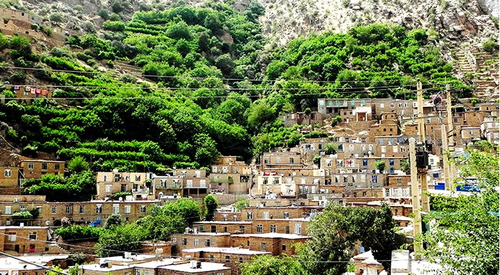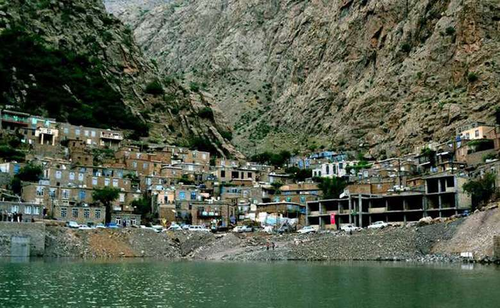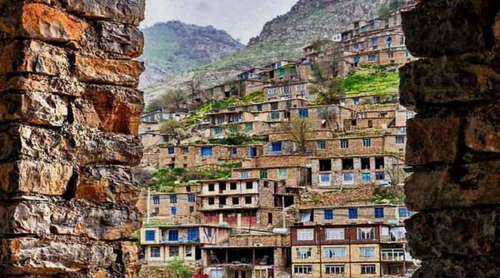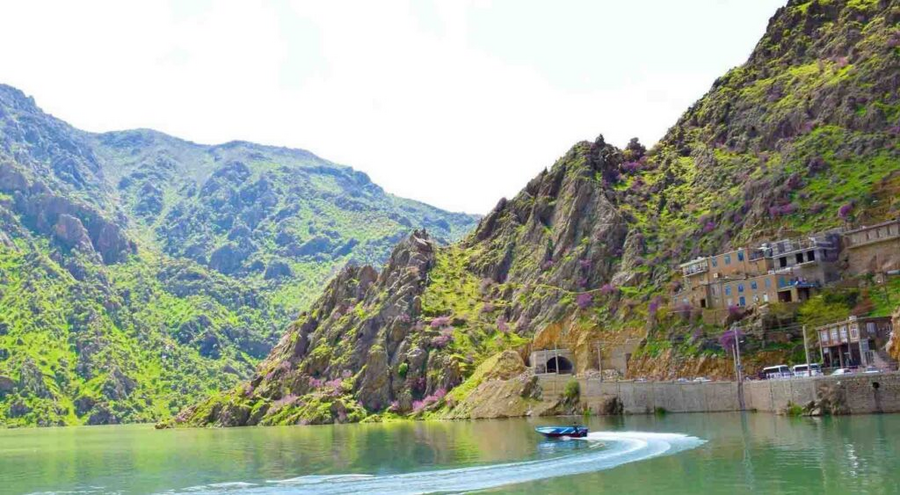There are a number of villages in Hawraman that are more famous because of their characteristics and are known more prominently than the others. One of these villages that is a part of Lihon Hawraman is Hajij. Like the other villages in Hawraman, Hajij possesses a unique and gorgeous view but what has made Hajij so famous is several historical, religious, and touristic places which will be discussed in this article.
Hajij village is located 35 kilometers from Pawa city and 123 kilometers from Kirmashan in the Nawsud section and its area is 53 hectares. Neighboring villages of Hajij include Naw, Dariyan, Nodsha, Darahajij, and Asparez. The road to Hajij is one of the beautiful features of Hawraman with spectacular nature. In order to go to Hajij, one has to pass through a winding road and long tunnels.

The place where Hajij is located in a beautiful valley and has a nice and clean climate. The name Hajij also means a deep and long valley with many trees. This village was built 1250 years ago. The history of the creation of this village goes back to the time when Seyyed Obeidollah son of Imam Kazim known as "Kosay Hajij" went to this place along with his six companions and founded this village. According to historical evidence, Seyyed Obeidollah went to Hajij in 190 Hijri, 811 A.D., and stayed in this village for a short while before he died there. Kosay Hajij is one of the sacred tombs in this village and people still respect it greatly. Kosay Hajij is considered as a religious touristic destination and tourists from all parts of Kurdistan and Iran even other countries visit it.
The village of Hajij is recognized as the cleanest village in the world by UNESCO. Whenever someone goes to this village, the first thing that seems interesting to them is the clean climate of this village. This clean air has helped the people of this village not to feel sick as much as other people from other places, especially lung cancer, asthma, and respiratory disorders.

The people of Hajij always wear Kurdish clothes even if they leave the village and go to another village or a city, they still wear their Kurdish clothes which has become a part of their identity. The men always put on special traditional hats made with special fabrics. In fact, Pishtwen (a kind of belt) and Mezar (a special hat) have become an identification symbol of these people.
The inhabitants of this village are hardworking and they are famous for this. They have always been able to provide their life necessities themselves from ancient times. Hajij villagers are occupied with making Kilash (traditional Kurdish shoes), Shawl, and Jajm, and spinning a kind of fabric called "Muhir". However, nowadays, a part of the people of this village have left it in order to continue their education or find jobs living in other cities.

The "Bil" river is one of the water sources in Kurdistan. This river comes from the mountains located in Hajij and it joins the Sirvan river. According to historical evidence, Bil is a Greek word that means God of water. In Hawraman, Bil has another meaning, too; when in summer the weather becomes very hot and the fruit that has been picked from the trees goes bad very soon, they are called Bil. However, the experts believe that in fact, the name of Bil waterfall comes from the Greek word. The amount of water in this river depends on the amount of rainfall in a year. Before, the spring passed below the village and joined the river, but now, due to the Dariyan dam that has been made, the water source of this river has been changed to a higher location.
The famous places in Hajij Village:
Bil spring, Dariyan dam, Shaho mountains, Chil Khana, the main Mosque, Kosay Hajij, Khanaqa, and Pir's Pond.









